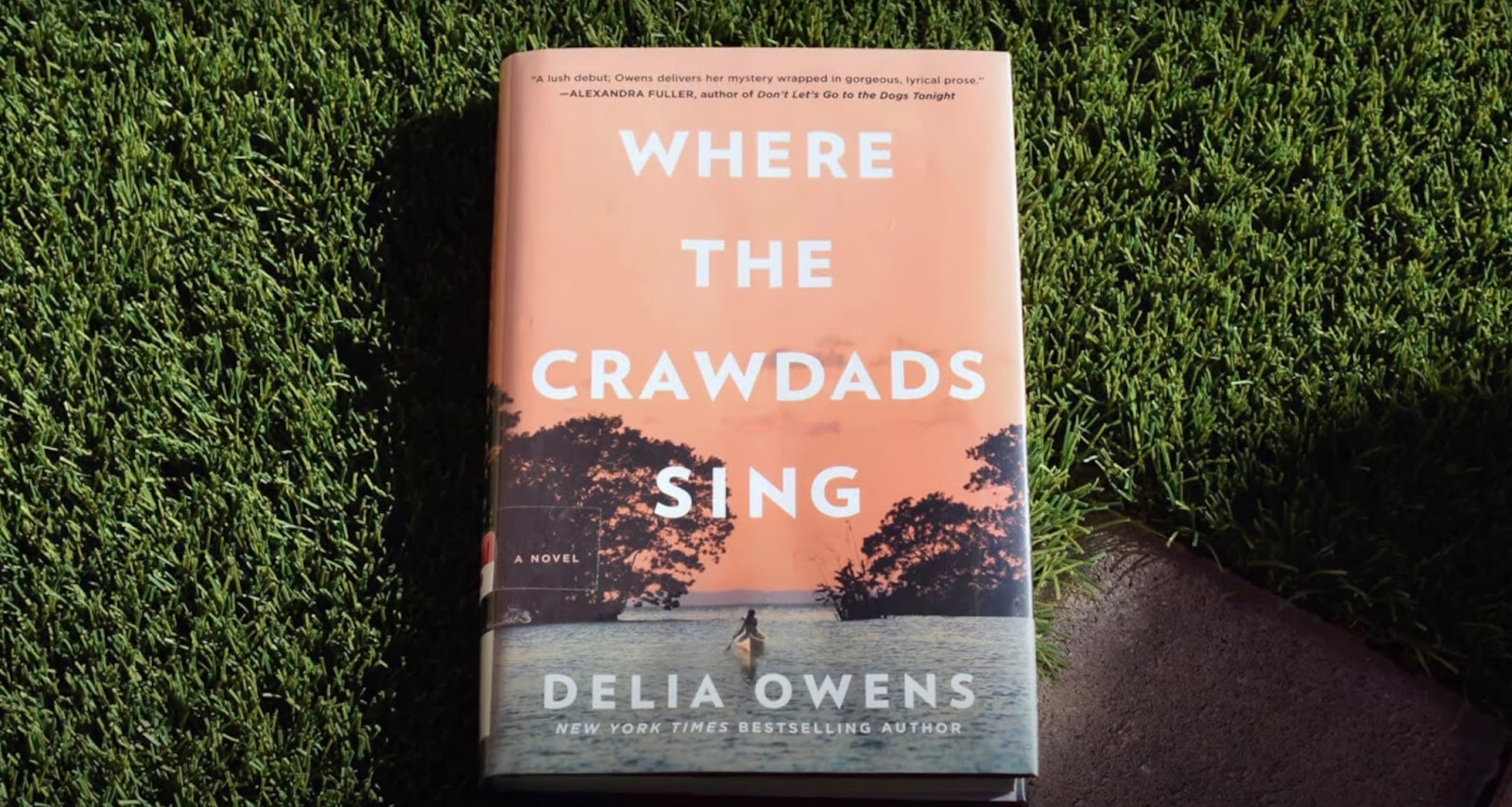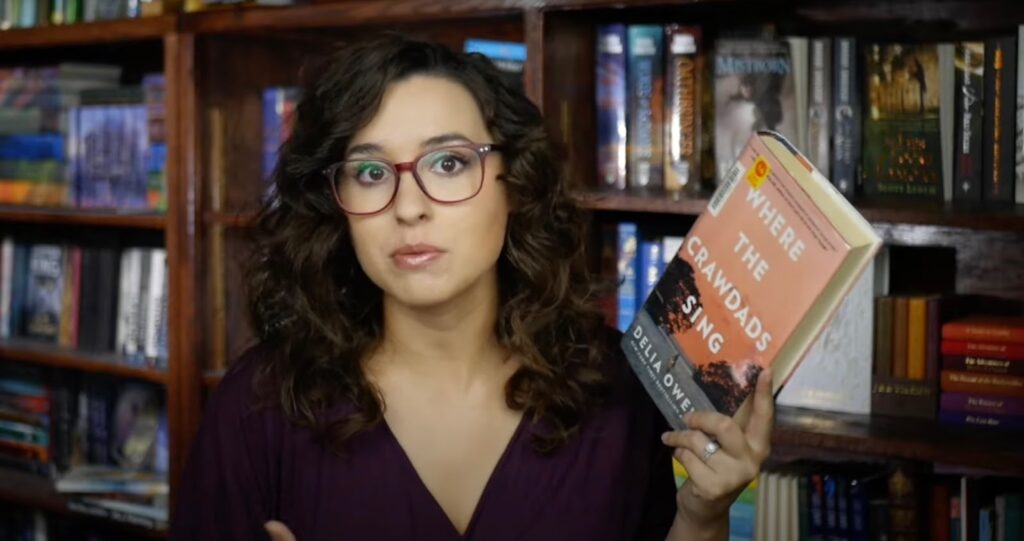
In the world of literature and cinema, adaptations often spark debates among fans about which version captures the essence of the story better. “Where the Crawdads Sing” by Delia Owens is a prime example of a novel that made its way to the big screen, directed by Olivia Newman in 2022. This article delves into a detailed analysis comparing the book and movie versions of this captivating tale, exploring the nuances of character development, plot intricacies, and overall execution.
Summary
Kya’s Journey in the Swamps
The narrative of “Where the Crawdads Sing” revolves around Kya, a young girl who grows up isolated in the swamps during the 1950s and 1960s. Dubbed as the “marsh girl” by the judgmental townsfolk, Kya faces ostracization and prejudice due to her unconventional lifestyle. The mysterious death of a man named Chase further complicates her life, as rumors swirl linking her to the incident because of their past relationship. As Kya finds herself on trial for murder, the story takes viewers on a journey through her past, unraveling the complexities of her relationships with Chase and another man, Tate.
Unveiling Secrets and Resolutions
Despite facing accusations and societal scorn, Kya eventually proves her innocence in the trial. The story culminates in her rekindled romance with Tate, offering a sense of closure and redemption for the protagonist. However, the ultimate revelation of Chase’s true fate only comes to light after Kya’s passing, adding a poignant twist to the tale of love, loss, and resilience.
Book Review
Character Depth and Narrative Flaws
While “Where the Crawdads Sing” paints vivid and evocative descriptions of the natural scenery, the novel falls short in terms of character development. Critics have pointed out the lack of depth in the portrayal of key characters, rendering them one-dimensional and lacking in complexity. The dialogue within the book has been criticized for its cheesy and unnatural tone, detracting from the overall authenticity of the interactions. Delia Owens’ background in nonfiction and science writing is evident in the narrative, where the creation of nuanced and compelling characters seems to be a weak point.
Romance and Mystery Elements
The romantic subplot in the book has been deemed lackluster by some readers, failing to evoke the emotional depth and intensity expected in such narratives. Similarly, the murder mystery aspect of the plot has been met with mixed reviews, with some finding it underwhelming and predictable. Even the courtroom scenes, typically a highlight in storytelling, have been criticized for feeling repetitive and uninspired, failing to engage readers fully.
Comparison to Genre Blends
Overall, both the book and movie adaptations of “Where the Crawdads Sing” have been likened to a fusion of young adult romance and Lifetime movie tropes. While the scenic descriptions offer moments of beauty and tranquility, the shortcomings in character development and plot execution leave some audiences wanting more from the narrative.
Movie Review
Visual Storytelling and Cinematic Appeal
The transition of “Where the Crawdads Sing” from page to screen brings a visual richness to the story, capturing the atmospheric beauty of the swamplands and the emotional turmoil of the characters. The movie adaptation excels in creating a…
Acting Performances and Emotional Impact
One of the strengths of the movie lies in the performances of the cast, bringing depth and authenticity to the characters that may have felt lacking in the book. The on-screen chemistry between the actors adds layers to the relationships portrayed, enhancing the emotional resonance of the story and drawing viewers into the narrative in a compelling way.
Adaptation Success and Audience Reception
Despite the challenges of translating a beloved novel to film, “Where the Crawdads Sing” manages to strike a balance between honoring the source material and providing a fresh cinematic experience. The movie adaptation has garnered praise for its visual aesthetics, engaging performances, and ability to evoke a range of emotions from its audience, making it a noteworthy addition to the realm of literary adaptations.
Kya’s Childhood
Solitude and Survival in the Swamps
Kya’s upbringing in the isolated swamplands shapes her resilient and self-reliant nature, instilling in her a deep connection to the natural world around her. Her survival instincts and resourcefulness become defining traits as she navigates a harsh and unforgiving environment, forging a unique identity amidst societal rejection and adversity.
Innocence and Vulnerability
Despite her strength and independence, Kya’s childhood also reveals moments of vulnerability and innocence, underscoring the fragility of her emotional state amid the challenges she faces. The juxtaposition of her inner resilience with outer vulnerability adds layers to her character, portraying a complex and multifaceted individual struggling to find her place in a world that misunderstands and judges her.
Growth and Transformation
As Kya matures through her tumultuous childhood experiences, she undergoes a profound transformation, evolving from a misunderstood outcast to a resilient survivor who defies expectations and overcomes obstacles. Her journey of growth and self-discovery forms the heart of the narrative, offering a poignant exploration of identity, belonging, and the enduring power of the human spirit.

Tate
The Compassionate Friend
Tate emerges as a pivotal figure in Kya’s life, offering her kindness, understanding, and companionship in a world marked by cruelty and isolation. His unwavering support and genuine affection provide Kya with a sense of belonging and acceptance, shaping the course of their intertwined destinies and laying the foundation for a deep and enduring bond.
Intellectual Pursuits and Shared Passions
Tate’s shared love for science and exploration mirrors Kya’s own curiosity and thirst for knowledge, creating a strong intellectual connection between the two characters. Their mutual interests and complementary personalities form the basis of a profound relationship that transcends societal norms and expectations, highlighting the transformative power of genuine connection and shared passions.
Sacrifice and Redemption
As Tate navigates his own struggles and aspirations alongside Kya, he must confront difficult choices and sacrifices that test the limits of his loyalty and devotion. His willingness to stand by Kya in times of adversity and uncertainty underscores the depth of his commitment and the redemptive nature of their bond, ultimately leading to a resolution that offers hope and healing for both characters.
Chase
Enigmatic Charmer and Troubled Figure
Chase’s enigmatic presence in Kya’s life introduces an element of intrigue and danger, casting a shadow of uncertainty over their tumultuous relationship. His charismatic charm and troubled past create a complex dynamic with Kya, blurring the lines between love and manipulation, trust and betrayal, as they navigate the turbulent waters of their connection.
Secrets and Deception
The mysteries surrounding Chase’s character deepen as secrets and deceptions come to light, revealing hidden truths and ulterior motives that complicate his interactions with Kya. His role in the unfolding drama adds layers of tension and suspense to the narrative, keeping readers and viewers on edge as they uncover the darker aspects of his persona and the impact of his actions on those around him.
Consequences and Closure
Chase’s presence looms large over Kya’s life, leaving a trail of consequences and unresolved conflicts in his wake. The repercussions of his actions reverberate throughout the story, shaping the fates of the characters involved and setting the stage for a climactic reckoning that tests the boundaries of forgiveness, justice, and redemption in a tale of love and loss.
The Trial
Legal Drama and Moral Dilemmas
The trial sequence in “Where the Crawdads Sing” serves as a focal point of tension and conflict, as Kya faces accusations of a crime she did not commit, pitting her against a skeptical community and a flawed justice system. The courtroom drama unfolds with gripping intensity, raising questions of truth, justice, and the complexities of human nature in a narrative rife with moral dilemmas and ethical quandaries.
Truth and Perception
As the trial progresses, the lines between truth and perception blur, challenging the audience to question their assumptions and biases about guilt and innocence. The unfolding revelations and testimonies shed light on the intricacies of human behavior and the fallibility of judgment, forcing characters and viewers alike to confront uncomfortable truths and confront the consequences of their actions.
Redemption and Resolution
The resolution of the trial brings a sense of closure and redemption for Kya, vindicating her innocence and restoring her faith in the inherent goodness of humanity. The courtroom proceedings serve as a crucible of transformation, testing the characters’ convictions and principles while offering a path towards healing and reconciliation in a narrative that explores the complexities of justice and mercy.
Getting with Tate
Rekindling Romance and Reconciliation
Kya’s reunion with Tate marks a turning point in her journey, as the two characters rediscover their connection and reaffirm their bond in the aftermath of the trial. The rekindling of their romance symbolizes a second chance at love and happiness, offering a sense of closure and fulfillment for both protagonists as they navigate the challenges of their shared past and uncertain future.
Healing Wounds and Building Trust
The reconciliation between Kya and Tate involves a process of healing old wounds and rebuilding trust in the aftermath of betrayal and misunderstanding. Their renewed relationship reflects a deeper understanding and acceptance of each other’s flaws and vulnerabilities, paving the way for a stronger and more resilient partnership grounded in mutual respect and empathy.
Embracing the Future
As Kya and Tate embark on a new chapter together, they face the unknown with courage and optimism, embracing the possibilities of a brighter future filled with promise and potential. Their journey of rediscovery and renewal offers a message of hope and resilience, illustrating the transformative power of love and forgiveness in overcoming adversity and finding peace in the midst of turmoil.
The Ending
Poignant Revelations and Bittersweet Resolutions
The conclusion of “Where the Crawdads Sing” delivers poignant revelations and bittersweet resolutions that resonate with themes of love, loss, and redemption. The ultimate revelation of Chase’s fate after Kya’s passing adds a layer of complexity and nuance to the narrative, challenging perceptions and inviting reflection on the nature of truth and forgiveness in a story that defies easy categorization.
Legacy and Reflection
Kya’s legacy endures beyond her lifetime, leaving a lasting impact on those who knew her and those who only heard of her legend. Her story becomes a testament to the enduring power of resilience and determination in the face of adversity, inspiring others to embrace their true selves and forge their own paths in a world that often seeks to confine and define them.
Hope and Renewal
In the final moments of the story, hope and renewal shine through the darkness, offering a glimmer of light in the shadows of despair and doubt. The ending of “Where the Crawdads Sing” encapsulates a message of perseverance and faith in the face of uncertainty, reminding readers and viewers alike that even in the darkest of times, there is always the possibility of redemption and renewal for those who dare to believe in the power of love and forgiveness.

Delia Owens
Literary Background and Influences
Delia Owens, the author of “Where the Crawdads Sing,” brings a wealth of experience and expertise to her storytelling, drawing inspiration from her background in nonfiction and scientific writing. Her deep connection to the natural world and her keen observational skills infuse her narrative with rich detail and vivid imagery, creating a sense of place and atmosphere that immerses readers in the landscapes and lives of her characters.
Writing Style and Themes
Owens’ writing style is characterized by lyrical prose, evocative descriptions, and a keen eye for detail that brings her settings and characters to life with vivid clarity. Themes of nature, isolation, resilience, and the human spirit permeate her work, offering readers a window into the complexities of the human experience and the enduring power of hope and redemption in the face of adversity.
Impact and Reception
“Where the Crawdads Sing” has garnered widespread acclaim and commercial success, resonating with readers around the world and earning a place among contemporary literary classics. Owens’ ability to craft a compelling narrative that blends elements of mystery, romance, and coming-of-age themes has captivated audiences and critics alike, solidifying her reputation as a master storyteller with a unique voice and vision.
Book or Movie
Aesthetic Interpretations and Narrative Choices
The transition from book to movie involves a reinterpretation of the source material, as filmmakers adapt the story to suit the visual medium and constraints of cinematic storytelling. While the book allows for a deeper exploration of characters’ thoughts and emotions, the movie relies on visual cues, performances, and pacing to convey the essence of the narrative, leading to differences in tone, pacing, and emphasis between the two versions.
Audience Engagement and Interpretation
Readers and viewers may engage with the story differently depending on their preferred medium, as books and movies offer distinct experiences and modes of immersion. While books allow for a more intimate and introspective engagement with the narrative, movies provide a visual and auditory spectacle that can enhance the emotional impact and immediacy of the storytelling, appealing to different sensibilities and preferences among audiences.
Artistic Merits and Creative Liberties
Both the book and movie adaptations of “Where the Crawdads Sing” bring artistic merits and creative liberties to the table, showcasing the talents of writers, directors, actors, and designers in interpreting and reimagining the original work. While some changes may be necessary to translate the story effectively to the screen, the success of an adaptation ultimately hinges on its ability to capture the essence and spirit of the source material while offering a fresh perspective and interpretation for audiences to enjoy.
Conclusion
In the realm of literary adaptations, the comparison between the book and movie versions of “Where the Crawdads Sing” offers a fascinating study in storytelling dynamics and audience reception. While the book excels in descriptive imagery and thematic depth, it falls short in character development and narrative pacing, leaving some readers craving more substance and complexity. On the other hand, the movie adaptation brings visual richness and emotional resonance to the story, elevating the performances and cinematic elements to create a compelling viewing experience that resonates with audiences on a visceral level.
Ultimately, the success of an adaptation lies in its ability to honor the core themes and spirit of the original work while offering a fresh perspective and interpretation that captivates and engages audiences in new ways. “Where the Crawdads Sing” stands as a testament to the enduring power of storytelling across different mediums, inviting readers and viewers alike to immerse themselves in a world of mystery, romance, and resilience that transcends the boundaries of time and space.